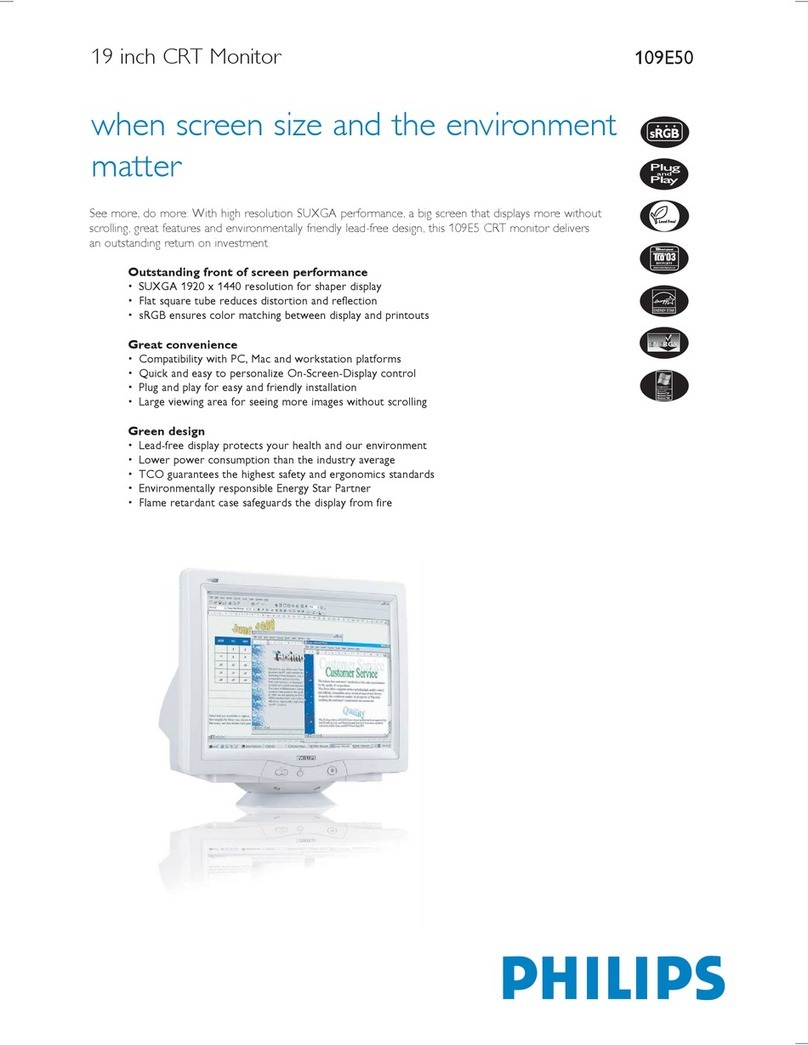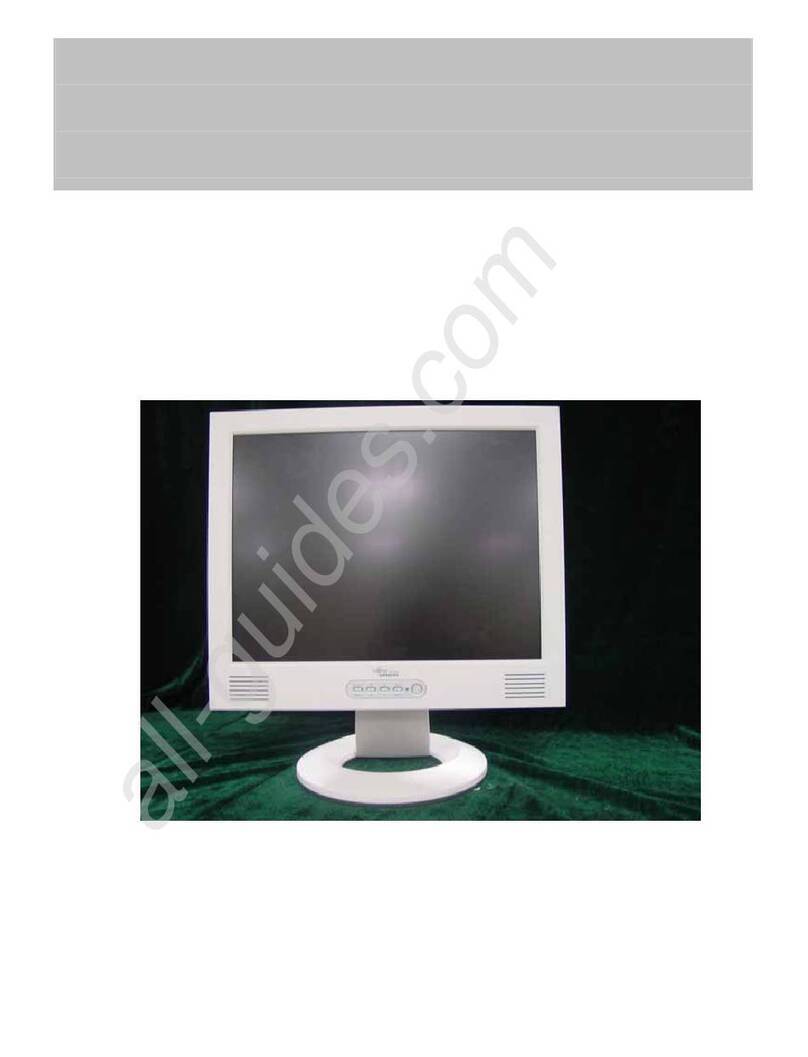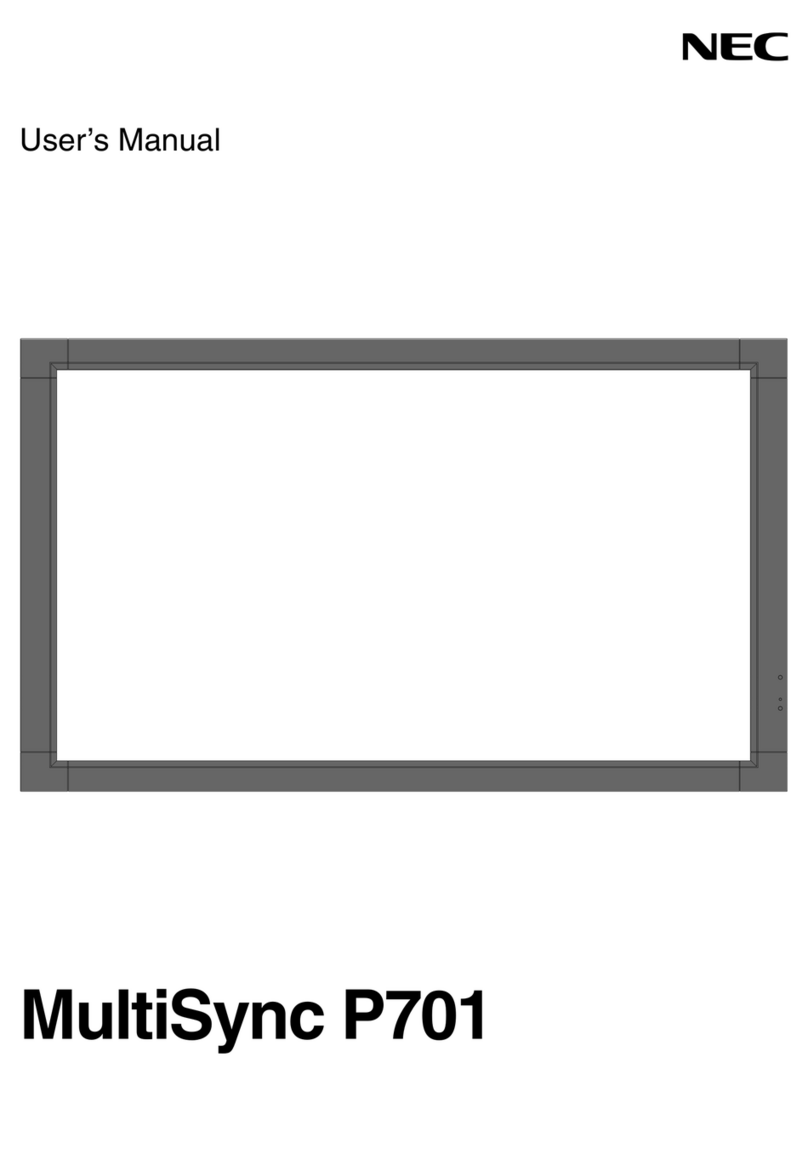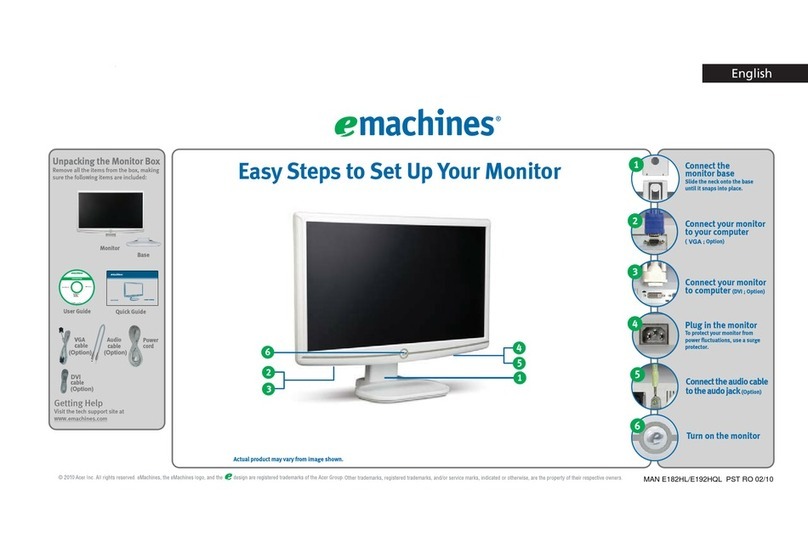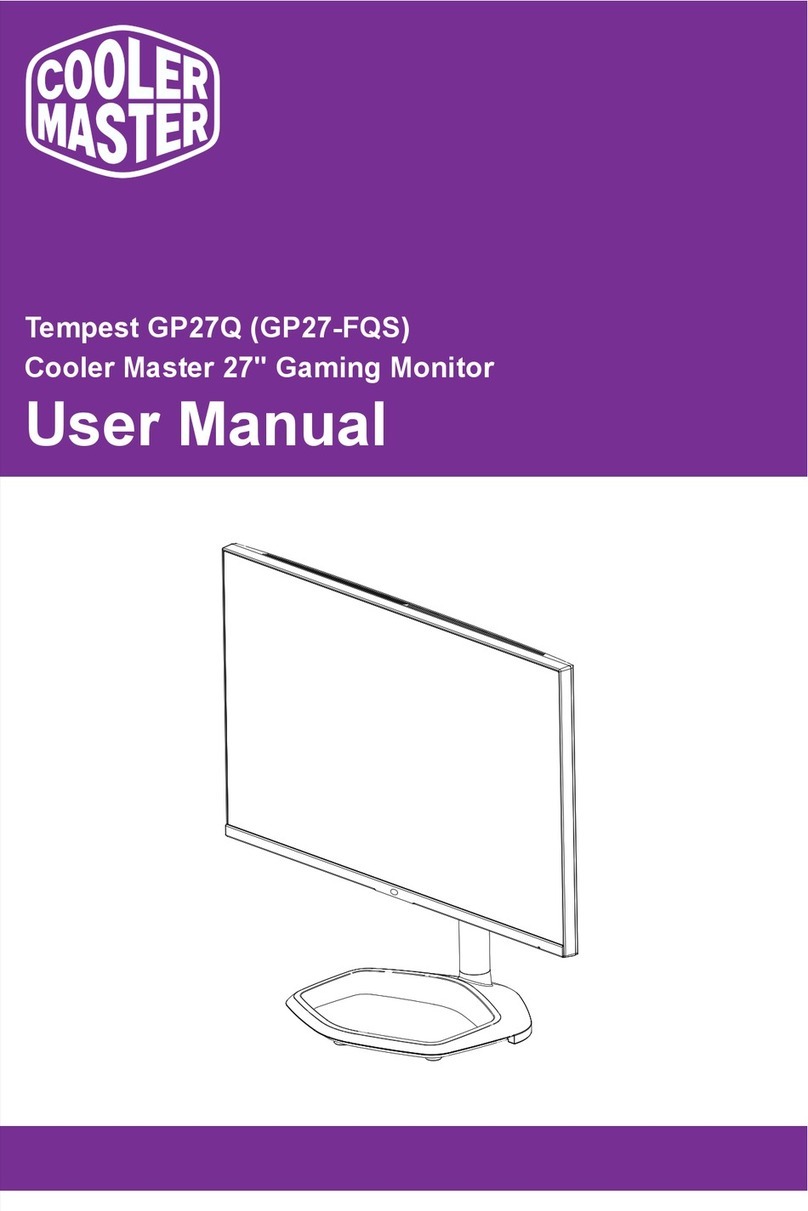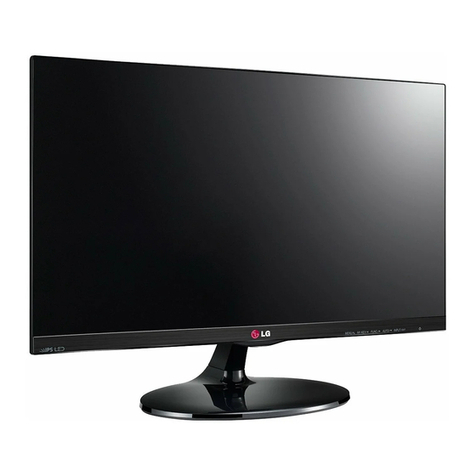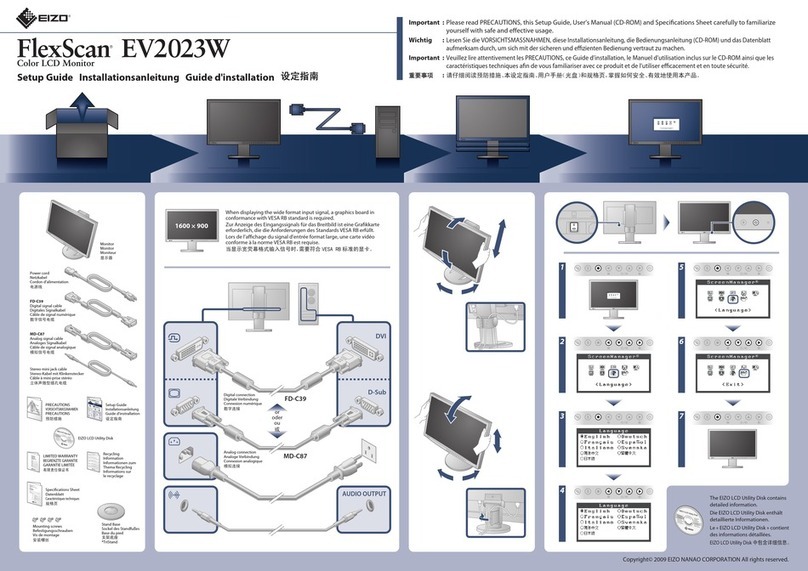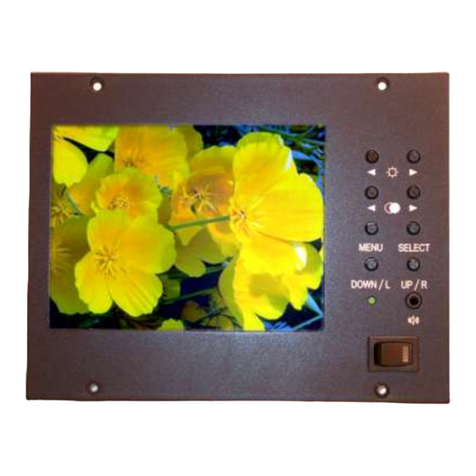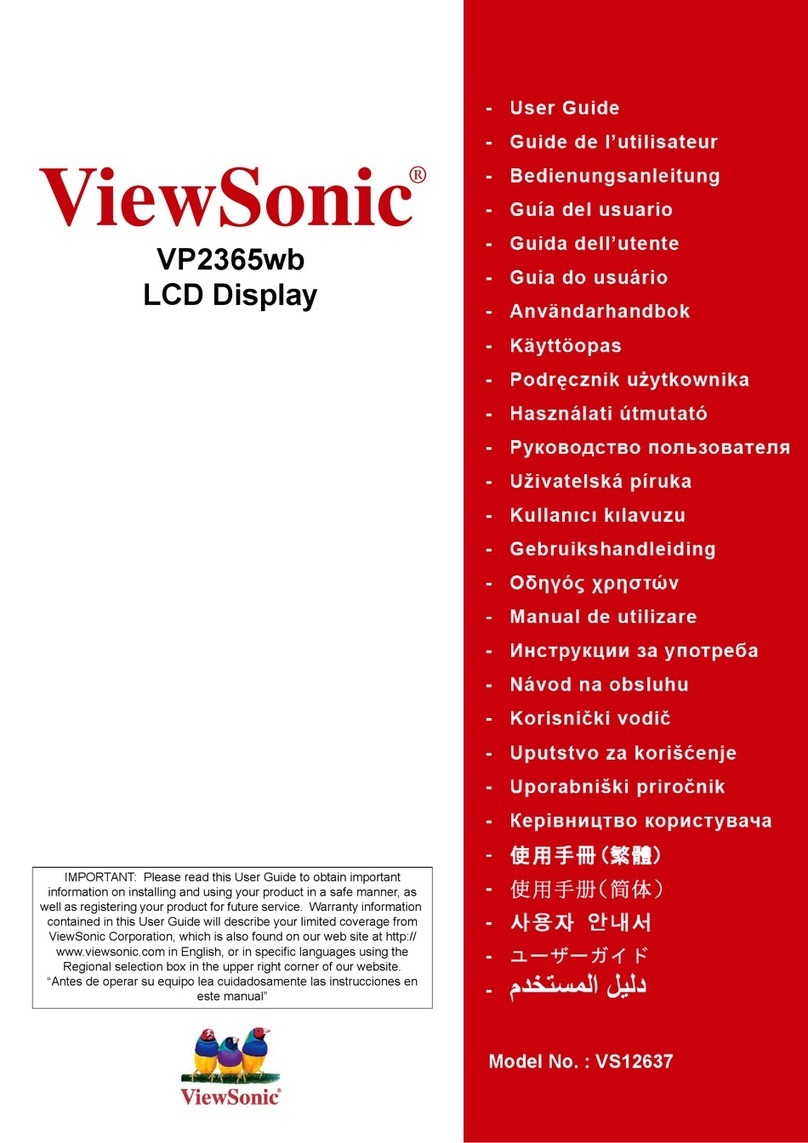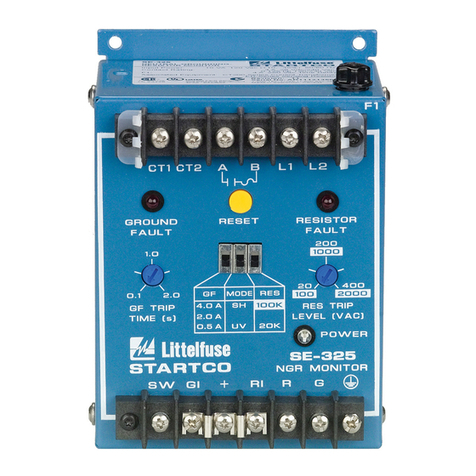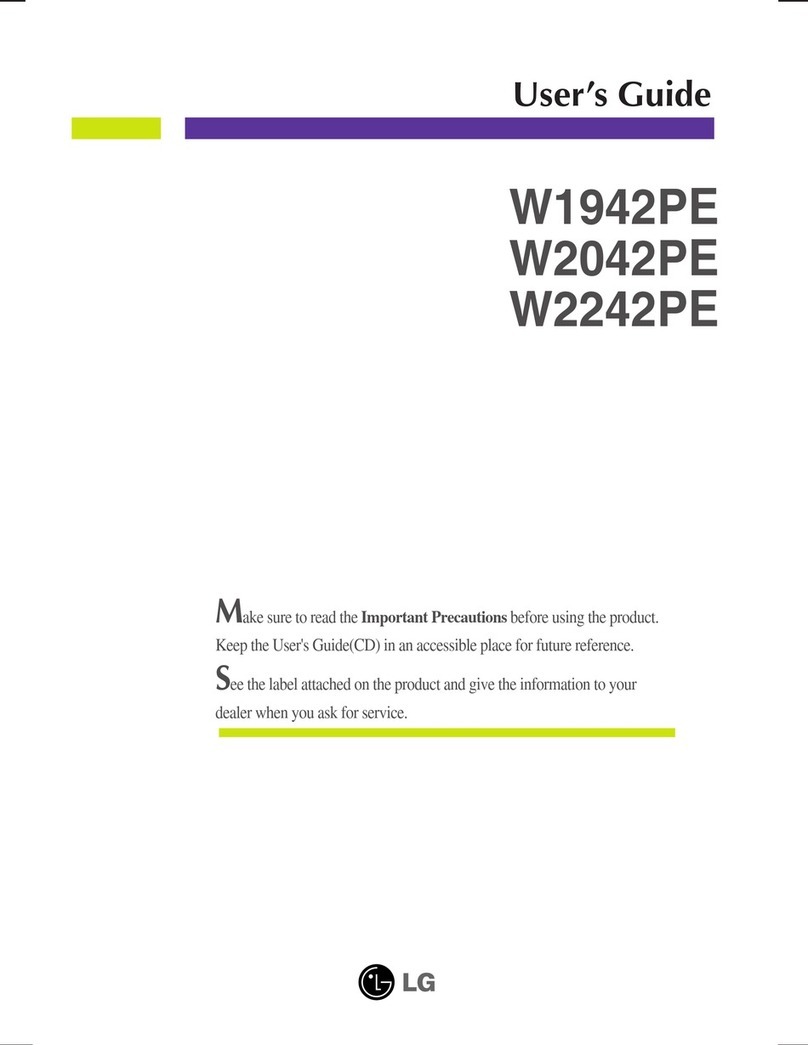a-eberle REG-DA User manual

Operating Manual
Transformer-Monitor
Feature TM1 of REG-DTM
Feature T1 of REG-DA
Transformer-Monitoring-Module TMM for upgrade
g
ISSUE August 2016

Table of Contents
Page 2
We take care of it.
Table of Contents
1. User guidance ................................................................................................................ 4
1.1 Target group .............................................................................................................................4
1.2 Warnings...................................................................................................................................4
1.3 Tips............................................................................................................................................5
1.4 Other symbols...........................................................................................................................5
1.5 Applicable documentation........................................................................................................5
1.6 Storage......................................................................................................................................5
2. Scope of delivery............................................................................................................ 5
3. Safety instructions.......................................................................................................... 6
4. Basic description of the Transformer Monitor ................................................................. 7
4.1 Activation of the Transformer Monitor on the REG-D(A).......................................................13
4.2 Monitor...................................................................................................................................14
Oil temperatures (TC/Transformer)........................................................................................154.2.1
Winding currents and winding temperature ..........................................................................154.2.2
Oil level (TC/Transformer) ......................................................................................................154.2.3
Overload Prediction................................................................................................................154.2.4
4.3 Service life...............................................................................................................................16
Operating hours (1).................................................................................................................164.3.1
Operating hours (2).................................................................................................................174.3.2
Loss of life (IEC).......................................................................................................................184.3.3
4.4 Statistics..................................................................................................................................20
5. SETUP .......................................................................................................................... 21
5.1 SETUP 1: Regulation................................................................................................................21
Transformer Parameters.........................................................................................................215.1.1
Regulation base ......................................................................................................................245.1.2
Temperature limits .................................................................................................................245.1.3
Programming/Setup
of
the
control
inputs and
outputs
.................................................255.1.4
5.2 Analog Channels .....................................................................................................................27
Analog in- and outputs ...........................................................................................................275.2.1
5.3 SETUP 2: Regulation................................................................................................................29
Calculation ..............................................................................................................................295.3.1
Fan assignment .......................................................................................................................305.3.2
Number of fans .......................................................................................................................315.3.3
Current measurement ............................................................................................................315.3.4

Page 3
Table of Contents
LEREF "Verzeichnis Ueberschrift" \* MERGEFORMAT Index
Fehler! Verwenden Sie die Registerkarte 'Start', um Verzeichnis Ueberschrift
dem Text zuzuweisen, der hier angezeigt werden soll.Inhaltsverz
5.4 SETUP 3: Alarm....................................................................................................................... 32
Oil temperature (TC) .............................................................................................................. 335.4.1
Oil level (TC) ........................................................................................................................... 335.4.2
Oil level (transformer)............................................................................................................ 345.4.3
5.5 SETUP 4: Alarm....................................................................................................................... 35
Oil temperature (Alarm) ........................................................................................................ 355.5.1
Winding temperature (Alarm) ............................................................................................... 365.5.2
Winding temperature (Trip)................................................................................................... 365.5.3
5.6 SETUP 5: Alarm Water and Gas in oil..................................................................................... 37
Water in Oil content............................................................................................................... 37
5.6.1
Gas in Oil (Total gas in Oil) content........................................................................................ 375.6.2
H2 (Hydrogen) in Oil content ................................................................................................. 385.6.3
CO (Carbon Monoxide) in Oil content.................................................................................... 385.6.4
5.7 SETUP 6: Lifetime ................................................................................................................... 39
Lifetime Transformer ............................................................................................................. 395.7.1
Lifetime Tap changer ............................................................................................................. 405.7.2
Lifetime Oil pump................................................................................................................... 405.7.3
Lifetime Fan............................................................................................................................ 415.7.4
5.8 SETUP 7: Overload ................................................................................................................. 41
Max. Winding temperature ................................................................................................... 415.8.1
Time to max. temperature..................................................................................................... 415.8.2
6. Retrofit of analogue channels (only REG-DTM and TMM).................................................42
7. Increasing the system's hardware resources ..................................................................45
7.1 Additional inputs and outputs ............................................................................................... 45
7.2 COM3/Modbus (RTU Master) Converter............................................................................... 47
8. Temperature measurement...........................................................................................48
8.1 Accuracy considerations ........................................................................................................ 48
9. Warranty ......................................................................................................................49
10. Test report....................................................................................................................49

Page 4
Page 4
User guidance
LEREF "Verzeichnis Ueberschrift" \* MERGEFORMAT Index
Fehler! Verwenden Sie die Registerkarte 'Start', um Verzeichnis Ueberschrift
dem Text zuzuweisen, der hier angezeigt werden soll.Contents
We take care of it.
1. User guidance
This user manual contains a summary of the information needed for installation, commis-
sioning and operation.
Read the user manual entirely and do not use the product unless you have understood its
content.
1.1 Target group
The User Manual is intended for skilled technician’s as well trained and certified operators.
The contents of this User Manual must be accessible to people tasked with the installation
and operation of the system.
1.2 Warnings
Structure of the warnings
Warnings are structured as follows:
SIGNAL
WORD
Nature and source of the danger.
Consequences in the event of non-observance.
Actions to avoid the danger.
Types of warnings
Warnings are distinguished by the type of danger they are warning against:
DANGER!
Warns of an immediately impending danger that can result in death
or serious injuries when not avoided.
WARNING!
Warns of a potentially dangerous situation that can result in death or
serious injuries when not avoided.
CAUTION!
Warns of a potentially dangerous situation that can result in fairly
serious or light injuries when not avoided.
NOTICE:
Warns of a potentially dangerous situation that results in material or
environmental damage when not avoided.

Page 5
Scope of delivery
LEREF "Verzeichnis Ueberschrift" \* MERGEFORMAT Index
Fehler! Verwenden Sie die Registerkarte 'Start', um Verzeichnis Ueberschrift
dem Text zuzuweisen, der hier angezeigt werden soll.Inhaltsverz
1.3 Tips
Tips on the appropriate use of the device and recommendations.
1.4 Other symbols
Instructions
Structure of the instructions:
Instructions for an action.
Indication of an outcome, if necessary.
Lists
Structure of unnumbered lists:
0List level 1
–List level 2
Structure of numbered lists:
1) List level 1
2) List level 1
1. List level 2
2. List level 2
1.5 Applicable documentation
For the safe and correct use of the product, observe the additional documentation that is
delivered with the device/software as well as the relevant standards and laws.
1.6 Storage
Store the user manual, including the supplied documentation, readily accessible near the
device.
2. Scope of delivery
0Software module TMM (integrated into the firmware of REG-D(A))
0License key for releasing the software feature in the REG-D(A) (if necessary)
0Analogue input module (mA or PT100 module, depending on the order)
0Operating manual

Page 6
Page 6
Safety instructions
LEREF "Verzeichnis Ueberschrift" \* MERGEFORMAT Index
Fehler! Verwenden Sie die Registerkarte 'Start', um Verzeichnis Ueberschrift
dem Text zuzuweisen, der hier angezeigt werden soll.Contents
We take care of it.
3. Safety instructions
Follow the operating instructions.
Keep the operating instructions with the device.
Regularly instruct staff in all relevant issues regarding occupational safety, the operat-
ing instructions and, in particular, the safety instructions they contain.
Ensure that the device is only operated if in perfect condition. Never use a damaged
device (physically damaged or malfunctioning).
Ensure the device is only operated by qualified personnel.
Connect and use the device only as specified.
Operate the device only with the recommended accessories.
Ensure that the device is operated only in its original condition.
Ensure that the device is only operated within the permissible rated data
Do not install or operate the device in environments where explosive gases, dust or
vapours may be present, i.e. that generally do not meet the requirements mentioned
in the technical datasheet.
Clean the device only with cleaning products that comply with the manufacturer's
specifications.
Use only spare parts and auxiliary materials that have been approved by the manufac-
turer.
Maintenance and repair of an open REG-D(A) Relay for Voltage Control & Transformer
Monitoring (plug-in module without housing) must only be carried out by authorised,
qualified personnel and must satisfy EMC Directives.
No supply or control voltage should be applied to a disassembled plug-in module, e.g.
open (disassembled) REG-D(A) Relay for Voltage Control & Transformer Monitoring, as
electrical parts carrying dangerously high voltages could be encountered.
NOTICE:
Please note that these operating instructions may not always contain the latest
information concerning the device. Should you require a more recent version
of these instructions or have any questions about the product or how to use it,
please contact the REGSysTM Support on:
A. Eberle GmbH & Co. KG does not accept any liability for damage or losses of any kind
arising from printing errors or changes in this manual.
Furthermore, A. Eberle GmbH & Co. KG will not accept any liability for loss or damage of
any kind resulting from faulty equipment or devices that have been modified by the user.

Page 7
Basic description of the Transformer Monitor
LEREF "Verzeichnis Ueberschrift" \* MERGEFORMAT Index
Fehler! Verwenden Sie die Registerkarte 'Start', um Verzeichnis Ueberschrift
dem Text zuzuweisen, der hier angezeigt werden soll.Inhaltsverz
4. Basic description of the Transformer Monitor
Power transformers are key components of an electrical supply grid. The failure of a trans-
former not only has major economic consequences for the energy supplier, it can also lead
to serious losses for consumers. For this reason, it makes sense to monitor the transformer
as closely as possible, to record its 'temperature curve' (the thermal image) and to collect
information about the current load and the expected remaining service life as well as the
moisture content of the oil and the paper. This task can - based on IEC standards - be solved
by electronic measuring and computing facilities.
This operating manual describes the concepts and the measurement principles behind the
TMM functionality which is available for the REG-DTM and the REG-DA. lt also describes how
the software and the hardware of a REG-D(A) can be upgraded to enable TMM functionality
in addition to performing its role as a voltage regulator. Also the steps required to set up
the transformer monitoring functions are described in detail.
The winding's hot-spot temperature is determined by the current that runs through the
windings and the oil temperature. The latter can be fed into the REG-D(A) as a mA signal or
directly as a PT100 signal. Appropriate input modules are available for both types of signals.
The appropriate analogue input channels must be available in order to record the fill levels
and other quantities such as humidity, H2 or the oil's CO content.
These channels can be also added to the REG-DTM on side.
It is not possible to upgrade REG-DA at a later date therefore if TM is required this must be
specified at time of ordering. For safety and warranty purposes disassembly of REG-DA is
not permitted.
Monitoring consists of monitoring the transformer's main parameters. The oil temperature
is recorded in addition to the current. The hot-spot temperature is determined from the oil
temperature and the current in accordance to IEC 60354 or IEC 60076 and extrapolated to
the transformer's service life consumption. Up to six cooling stages can be activated de-
pending on the oil or winding temperature. The system monitors the operating times of the
fan and controls the individual fan groups so that as balanced an operating time as possible
is achieved over the whole operating life. If desired, individual fans can also be permanently
assigned to a specific cooling stage. Additional alarms such as Buchholz pre-warning and/or
Buchholz triggering can be fed into the monitoring system as binary signals, displayed and
sent to a SCADA system for further processing (see Figure 1).

Page 8
Page 8
Basic description of the Transformer Monitor
LEREF "Verzeichnis Ueberschrift" \* MERGEFORMAT Index
Fehler! Verwenden Sie die Registerkarte 'Start', um Verzeichnis Ueberschrift
dem Text zuzuweisen, der hier angezeigt werden soll.Contents
We take care of it.
The following SCADA protocols are available:
0IEC 61850
0IEC 60870-5-101
0IEC 60870-5-103
0IEC 60870-5-104
0DNP 3.0 / DNP 3.0 over Ethernet
0MODBUS RTU / TCP
0SPABUS
0PROFIBUS
Figure 1: Signal diagram

Page 9
Basic description of the Transformer Monitor
LEREF "Verzeichnis Ueberschrift" \* MERGEFORMAT Index
Fehler! Verwenden Sie die Registerkarte 'Start', um Verzeichnis Ueberschrift
dem Text zuzuweisen, der hier angezeigt werden soll.Inhaltsverz
The thermal situation in the transformer can be displayed in a graphic (see Figure 2). Please
note that it is a simplified view of a complex situation. The 'simplification' is based on the
following assumptions:
0the oil temperature in the tank increases linearly from the bottom to the top
0the average temperature of the winding is linearly parallel to the oil temperature with a
constant temperature differential gr increasing from bottom to top
0the hot-spot temperature (P) is higher than the temperature of the winding at the up-
per (hot) end of the winding. The increase in temperature between the hot spot in the
winding and the oil temperature at the top of the tank is specified as constant Hgr (hot
spot to top oil gradient). Studies have shown that the factor H can vary between 1.0
and 2.1 based on the size, short-circuit impedance and winding design of the trans-
former.
The abbreviations used in the diagram are explained below. Measured values are indicated
by a solid square ( ), calculated values are indicated by a solid point ( ).
Figure 2: Thermal model based on IEC
A
Temperature of the top oil layer
B
Temperature in the transformer tank at the upper end of the winding
C
Temperature of the tank's oil at the centre of the winding
D
Temperature at the lower end of the winding
E
Represents the bottom of the tank
P
Hot-spot temperature
Q
Average winding temperature
R
Points that are assumed to be at the same temperature
X
X-axis of the graph shows the temperature
Y
Y-axis indicates the relative position of the individual points

Page 10
Page 10
Basic description of the Transformer Monitor
LEREF "Verzeichnis Ueberschrift" \* MERGEFORMAT Index
Fehler! Verwenden Sie die Registerkarte 'Start', um Verzeichnis Ueberschrift
dem Text zuzuweisen, der hier angezeigt werden soll.Contents
We take care of it.
The basic version has only one current input to determine the hot-spot temperature. Three
currents can also be measured through an optional Aron circuit (hardware Characteristic
M2).
In most cases, this configuration will produce acceptable results because one can assume
that the transformer has a more or less balanced load.
For this general operating condition:
The hot-spot temperature is calculated and the cooling equipment controlled according to
the model shown in Figure 3.
The operating current and the oil temperature are the most important measurements for
the estimation and calculation of the hot spot and the hot-spot temperature Θh. The values
of the measured oil temperature together with the current and characteristic values of the
transformer are put into the equation to obtain a thermal image of the transformer. This
enables the service life consumption of the insulation and the hot-spot temperatures to be
calculated.
The transformer's temperature can be controlled by connecting fans in six stages, two oil
pumps and a heater. The fans are controlled automatically based on the oil-, winding or
predicted winding temperature. The outputs used to control the fans and the inputs used
to feed the temperature signals into the controller can be set up at a later stage in the
menu-driven configuration.
A default configuration is supplied that may occasionally require a few minor changes.
If additional analogue inputs or outputs and/or additional binary inputs or outputs are re-
quired for the Monitoring system, interface modules (ANA-D and BIN-D) can be connected
through the device's COM 3 port. This increases the hardware resources of the basic unit.
If the information provided by the system is used properly, the function can significantly in-
crease the transformer's availability using comparatively few resources.

Page 11
Basic description of the Transformer Monitor
LEREF "Verzeichnis Ueberschrift" \* MERGEFORMAT Index
Fehler! Verwenden Sie die Registerkarte 'Start', um Verzeichnis Ueberschrift
dem Text zuzuweisen, der hier angezeigt werden soll.Inhaltsverz
Block diagram of the hot-spot calculation and the cooling stage control
Figure 3: Block diagram
K
:
Load factor = I / IN
Θh
:
Hot-spot temperature
Θ0
:
Oil temperature (measured)
Θhp
:
Expected hot-spot temperature
Hgr
:
Hot-spot to top-oil gradient
Y
:
Winding exponent
∆Θh
:
Hot-spot temperature increase
Figure 4: Oil temperature measurement diagram
If a temperature transducer has already been allocated to measure the oil temperature, the
oil temperature can be fed into the controller as mA input. If necessary, the PT100 temper-
ature sensors can also be connected directly in a three-wire circuit.

Page 12
Page 12
Basic description of the Transformer Monitor
LEREF "Verzeichnis Ueberschrift" \* MERGEFORMAT Index
Fehler! Verwenden Sie die Registerkarte 'Start', um Verzeichnis Ueberschrift
dem Text zuzuweisen, der hier angezeigt werden soll.Contents
We take care of it.
If remote temperature gauges are used, both the hot-spot temperature and the oil temper-
ature can be provided as mA output.
The oil or hot-spot temperature function enables up to six groups of fans, two oil pumps
and a heater to be connected.
Figure 5: Diagram of the oil temperature measurement in the tap changer
If the oil temperature in the tap changer vessel is also to be recorded, a second mA or
PT100 input must be available.
Figure 6: Fill level determination diagram
The fill levels of the transformer and/or tap changer can also be recorded and fed into the
controller. The information can be displayed on the Control unit's screen and if necessary
transferred to a SCADA system (Figure 1).

Page 13
Basic description of the Transformer Monitor
LEREF "Verzeichnis Ueberschrift" \* MERGEFORMAT Index
Fehler! Verwenden Sie die Registerkarte 'Start', um Verzeichnis Ueberschrift
dem Text zuzuweisen, der hier angezeigt werden soll.Inhaltsverz
4.1 Activation of the Transformer Monitor on the REG-D(A)
The Transformer Monitor is a part of the REG-D(A) firmware and it is managed with the
software feature TM. By activating and deactivating the feature TM the Transformer Moni-
tor function is switched on and off.
To activate the feature TM a key code is necessary. This code will be delivered if the TMM
(retrofit of an existing REG-D(A)) package is ordered. The feature TM can then be released
with the service tool of the Software WinREG (from version 3.9.7) or in future with the AE
Toolbox software.
If the REG-D(A) is ordered directly with the Transformer Monitoring feature (order feature T
or TM) then there is no additional key code necessary. The function is then already enabled
at delivery.
To release the Transformer Monitor on an existing REG-D(A) it’s not automatically neces-
sary to do a firmware upgrade. This depends on the already installed firmware version. But
in most cases it makes sense to update the firmware to have the full functionality of the
latest version of the Transformer Monitor available.
Firmware version and update
This manual describes the state of the transformer monitor in the REG-D (A) firmware
version 2.23. Should you use a different firmware version is an aberrant functions may
arise. In general a firmware update to the latest version can be carried out on every
REG-D(A). For this purpose, please refer to the notes for the firmware update in the user
manual of the REG-D(A).

Page 14
Page 14
Basic description of the Transformer Monitor
LEREF "Verzeichnis Ueberschrift" \* MERGEFORMAT Index
Fehler! Verwenden Sie die Registerkarte 'Start', um Verzeichnis Ueberschrift
dem Text zuzuweisen, der hier angezeigt werden soll.Contents
We take care of it.
4.2 Monitor
In the main menu (press
<Menu>), select the Moni-
tor function with the <F4>
function key. Press F1 to se-
lect the monitor indication.
The Monitor's basic screen
shows either the oil tem-
perature or the winding temperature as decimal values and a bar graph. The current cool-
ing stage is also displayed.
The oil temperature is displayed whenever the oil temperature is selected to regulate the
temperature, the fan and the oil pump control. The winding temperature is displayed when
either the 'Smart Fan Control' (SFC) or the winding temperature is selected as the basis for
the temperature control.
Based on the model, trans-
formers are equipped with
several fan groups. Since the
fans are similar in terms of
their cooling performance, a
greater cooling performance
is achieved by running several fans at the same time. Cooling stage 3 means that three
groups of fans are working at the same time. Cooling stage 1 means that one group of fans
is working.
Press '→' to access the next two screens. These screens
display either the oil temperature for the transformer and
the tap changer or the hot-spot temperature and the load
current flowing through the windings.

Page 15
Basic description of the Transformer Monitor
LEREF "Verzeichnis Ueberschrift" \* MERGEFORMAT Index
Fehler! Verwenden Sie die Registerkarte 'Start', um Verzeichnis Ueberschrift
dem Text zuzuweisen, der hier angezeigt werden soll.Inhaltsverz
Oil temperatures (TC/Transformer)4.2.1
The temperature can either be displayed as bars or numerically. With the help of the setup
menu the maximum temperatures for the transformer and the tap-changer can be set. If
the temperature in the tap-changer tank is required, a mA value has to be supplied to the
voltage regulator via an analogue input.
Winding currents and winding temperature4.2.2
The “windings” display mode provides information on the present current flowing through
the windings and the hot-spot temperature calculated from it or provided from a winding
temperature measurement device like the REG-FO.
Oil level (TC/Transformer)4.2.3
Press '→' to access the next screen and display the fill lev-
els for the transformer tanks and the TC vessel (TC tap
changer). The oil level in the transformer and the tap
changer can only be displayed if the controller is supplied
with the corresponding sensor data from the transformer
and the tap changer. In the simplest case, the fill level is
supplied to the controller as an analogue signal. Scaling is
done from the menu. The bar flashes when the limits are exceeded. In addition the level
alarm is available as relay and LED output function as well as SCADA indication. A black non-
flashing column indicates that the 'fill level is OK'.
Overload Prediction4.2.4
Press '→' to access the next screen and display the possible overload and the time within
which the over temperature will be reached.
Possible overload
This screen provides information about the transformer's load capacity. It indicates the load
that the transformer can carry as a percentage without exceeding the maximum winding
temperature at the end of the window (Time to max temperature).
Time to over temperature
This screen displays the time after which the maximum winding temperature will be
reached at the current load.
Two dashes are displayed if the temperature limit is not reached at the current load. The
same applies when the temperature limit has already been reached or exceeded.

Page 16
Page 16
Basic description of the Transformer Monitor
LEREF "Verzeichnis Ueberschrift" \* MERGEFORMAT Index
Fehler! Verwenden Sie die Registerkarte 'Start', um Verzeichnis Ueberschrift
dem Text zuzuweisen, der hier angezeigt werden soll.Contents
We take care of it.
4.3 Service life
The 'SERVICE LIFE' menu, which combines all of the service lives (transformer, fan, pumps),
is accessed from the 'MONITOR' main menu by pressing <F2>.
Operating hours (1)4.3.1
'Operating hours 1' displays the accumulated operating hours for the transformer (trans-
former under voltage), the tap changer and the oil pump. The operating hours for the
transformer and the tap changer are different because only the hours that the motor is in
operation are measured for the tap changer. The 'Operating light time' is used as an indica-
tor of the tap changer's operating hours. This means that the service life counter is only
active for the tap changer if a binary input is configured as 'TC in operation' (07:TC.i.Op).
The counter value does not change if an input is configured but no 'TC in operation' signal
connected. If a binary input is not configured, the program uses the 'Maximum Time TC in
operation' setting in the Controller's SETUP 5 menu (Functions..., F1).
In this case, the tap changer's service life counter is incremented by the preset time when
the controller issues a control command.
The transformer's operating hours are recorded by default if a voltage on the secondary
page is set to 'Transformer in operation'.
This approach can produce incorrect results (see Figure 7) based on the location of the
voltage transducer.
In any case, measuring the primary voltage of the transformer will produce correct results.
The firmware characteristic 'Three winding' can be used to activate a second voltage chan-
nel that measures the primary voltage. The second voltage input is always present and in
principle available for this task when the controller is equipped with hardware Characteris-
tic 'M9'. In all other cases, the regulator –if the primary voltage is to be measured –must
be sent in for modification.
If software feature 'Three winding' is activated (only possible in combination with hardware
Characteristic M9), the operating hour count is derived from the primary voltage.
If the feature 'Three winding' is not activated, the operating hours are derived from the
transformer's secondary voltage, which - as mentioned above - can produce incorrect re-
sults based on the location of the voltage transducer.
Figure 7 shows an application in which two transformers are fed from a bus bar.

Page 17
Basic description of the Transformer Monitor
LEREF "Verzeichnis Ueberschrift" \* MERGEFORMAT Index
Fehler! Verwenden Sie die Registerkarte 'Start', um Verzeichnis Ueberschrift
dem Text zuzuweisen, der hier angezeigt werden soll.Inhaltsverz
If the voltage transducer is installed close to the bus bar, the controller will still measure a
voltage if the secondary voltage of transformer T1 is switched off because the bus - and
thus the voltage transducer - is supplied through the second active transformer T2.
Figure 8 displays the secondary control voltage, while the voltage for the operating hour
count is tapped from the primary voltage transducer. This version records the operating
hours correctly.
The value I2t is used to estimate the contact erosion in the tap changer. Two parameters
are needed to determine this value. One is the current in the electric arc and the other the
time 't' during which the arc is discharged. Current 'I' is the current that is flowing at the
time of the changeover, whereas time 't' can be entered for a specific tap changer. It should
be noted that the changeover time is very difficult to determine accurately and is also not
constant over the life of the changer. But the accumulation of I2t provides a way to capture
the qualitative condition of the tap changer. If time 't' is set to 1, the sum of product I2t is
only I2.
If the oil pumps are controlled by the controller, the operating time of the pump is summed
up and displayed in the menu.
Figure 7: secondary voltage measurement Figure 8: primary and secondary voltage
measurement
Operating hours (2)4.3.2
The operating times of the fan and the oil pumps are listed under 'Operating hours (2)'.
The fans are controlled according to an algorithm that always activates the fan with the
smallest total operating time. This ensures that all the fans are more or less evenly loaded
over time. It’s also possible to assign a certain cooling stage to a certain relay output (no
operating hour equalisation).
The oil pumps are fixed assigned to a digital output (no operating hour equalisation)

Page 18
Page 18
Basic description of the Transformer Monitor
LEREF "Verzeichnis Ueberschrift" \* MERGEFORMAT Index
Fehler! Verwenden Sie die Registerkarte 'Start', um Verzeichnis Ueberschrift
dem Text zuzuweisen, der hier angezeigt werden soll.Contents
We take care of it.
Loss of life (IEC)4.3.3
The loss of life information is derived from the equations specified in IEC 60354 or IEC
60076-7.
The loss of life should not be confused with the operating hours described earlier. The 'Op-
erating hour' log file only counts the time during which the transformer is under voltage,
while the loss of life takes thermal ageing into account.
The relative thermal ageing of the insulation as a factor of temperature and time is deter-
mined by the Arrhenius equation:
and
:
Constants that are determined by tests on the insulators
T
:
Thermodynamic temperature in K
In the 80... 140°C temperature range, the Arrhenius equation can be replaced with the
slightly simpler Montsinger relationship.
P
:
Constant
Θ
:
Temperature in °C
According to scientific publications, a transformer's service life consumption doubles in the
80 to 140°C range when the temperature increases by about 6 K.
Another equation can be used to determine the relative service life consumption at tem-
perature Θhrelative to the normal service life consumption at temperature ΘhN.
(1)
The value ΘhN was specified for a transformer according to CEI/IEC 60354 Part 1/11.71 at
98°C. This temperature corresponds to the operation of a transformer with nominal output
at a coolant temperature of 20°C when the hot-spot over temperature is 78 K, i.e. 13 K
above the average over temperature of 65 K. These temperature conditions correspond to
the normal ageing of the insulation.

Page 19
Basic description of the Transformer Monitor
LEREF "Verzeichnis Ueberschrift" \* MERGEFORMAT Index
Fehler! Verwenden Sie die Registerkarte 'Start', um Verzeichnis Ueberschrift
dem Text zuzuweisen, der hier angezeigt werden soll.Inhaltsverz
The following equation can be derived in common logarithms from equation (1) with ΘhN =
98°C.
(2)
This relationship is shown in the below table:
Θhin °C
Relative service life consumption
80
0.125
86
0.25
92
0.5
98
1.0
104
2.0
110
4.0
116
8.0
122
16.0
128
32.0
134
64.0
140
128.0
Example:
10 hours at 104°C and 14 hours at 86°C consume (10 h x 2) + (14 h x 0.25) = 23.5 hours dur-
ing an operation period of 24 hours.
Note that the service life consumption is negligible below 80°C.
When the load and ambient temperature are constant, the relative service life consumption
is calculated with the relationship V x t. 't' is the time under load and V is the relative ser-
vice life consumption from equation (1).
More commonly, when the operating conditions are not constant, the transformer's service
life consumption is calculated according to the following equation:
or
n
:
Number of a time interval
N
:
Total number of the same time intervals

Page 20
Page 20
Basic description of the Transformer Monitor
LEREF "Verzeichnis Ueberschrift" \* MERGEFORMAT Index
Fehler! Verwenden Sie die Registerkarte 'Start', um Verzeichnis Ueberschrift
dem Text zuzuweisen, der hier angezeigt werden soll.Contents
We take care of it.
4.4 Statistics
Please press the <ESC> but-
ton (alternatively <MENU>
and <F4>) to go to the Moni-
tor Main screen.
All the tap changer’s activi-
ties are recorded in Statistics
< F3 >.
The total number of tap changes (65 in the example) and the total number of tap changes
under load (26 in the example) are recorded in STATISTICS –1.
This mode also provides information about which tap has been changed and how often.
These statistics give detailed information on the transformer setting.
Example: If there are only three or four tap positions in use, it usually indicates that either
the permissible deviation or the time factor for the control is not optimally adjusted.
An improvement in the settings leads to a reduction of the switching operations and there-
fore to longer maintenance intervals under certain circumstances.
The situation shown above can be analyzed as follows:
0The tap changer was in operation 65 times in total, where only 26 switching operations
were carried out under load.
0The tap changer is currently in position 2 and a current is flowing which is larger than
5% of the set current.
Load current indication by the double arrow
The double arrow symbol turns into a single arrow symbol if the current is below 5% of the
nominal current.
A second type of display can be selected by pressing < F1 >.
The historical graphics in STATISTICS -2 give the operator a qualitative impression of the
operations of the tap changer. The data is taken from the recordings in STATISTICS –1.
This manual suits for next models
1
Table of contents

